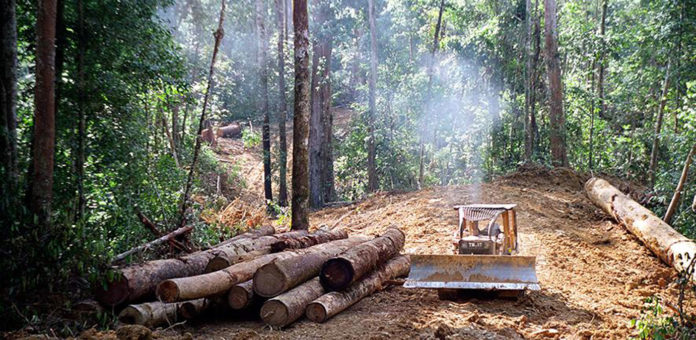Logging, pervasive across the lowland tropics, affects millions of hectares of forest, yet its influence on nutrient cycling remains poorly understood. One of the theories suggests that logging affects P cycling because this scarce nutrient is removed in extracted timber and eroded soil, leading to shifts in ecosystem functioning and community composition.
A new study by Cambridge University suggests that continually logging and re-growing tropical woods to supply timber is diminishing the degrees of imperative supplements in the soil. According to scientists, this continual growth may limit forest growth in the future.
Scientists observed that the trees, which are recovering tropical forests- have more robust leaves and lower concentrations of the nutrients phosphorus and nitrogen. Both ingredients are essential for plant and tree growth. Meanwhile, multiple cycles of logging and recovery irreversibly remove phosphorus from the forest system and are pushing the nutrient content towards ecological limits.
Soil absorbs nutrients including phosphorous, from rocks and later taken up by trees via their roots. Cutting down the trees leads these nutrients through soil erosion, gas emissions, and removal of nutrients in the extracted timber.
Almost 30% of the available phosphorus in the soil is being removed from tropical forest systems by repeated logging.
Dr. Tom Swinfield, a plant scientist in the University of Cambridge Conservation Research Institute, said, “We see that as the logged forests start recovering, they’re actually diverging from the old-growth forests in terms of their leaf chemistry and possibly also species composition, as the amount of available nutrients goes down. At the moment, the trees can cope, but the fact that they’re changing indicates phosphorus levels in the soil are dropping. This could affect the speed at which forests recover from future disturbances.”
Scientists captured high-resolution images of the forest landscape in north-eastern Borneo using LIDAR-guided imaging spectroscopy from an aircraft. Data obtained was then merged with nutrient measurements from 700 individual trees in the forest. Doing this enabled scientists to map the concentrations of nutrients in the trees’ leaves over an area containing repeatedly logged forest and old-growth forest, and compare the two.
This is the first landscape-scale study of how leaf function changes in response to logging. Selective logging is carried out extensively across millions of hectares of forest in the tropics so that degraded forests are now more widespread than old-growth forests. The study suggests that each consecutive harvest reduces the level of nutrients in the system, and newly established trees have to adapt to conserve the scarce resources available to them.
Professor David Coomes, Director of the University of Cambridge Conservation Research Institute, said, “Phosphorus limitation is a severe global issue: it’s one of the areas where humans are using a vital resource beyond sustainable levels. The researchers found that differences from old-growth forest become more pronounced as logged forests grow larger over time, suggesting exacerbated phosphorus limitation as forests recover.”
The study is published in the journal Global Change Biology.
